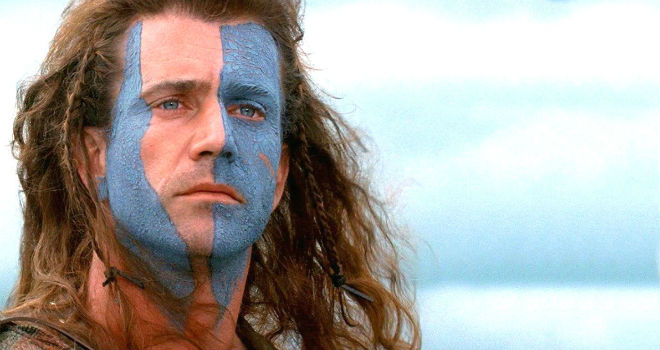 In retrospect, the popularity of "Braveheart" seems like a foregone conclusion.
In retrospect, the popularity of "Braveheart" seems like a foregone conclusion.The movie, which opened 20 years ago this week (on May 24, 1995), won five Oscars, two of them for star Mel Gibson (in his roles as producer and director). The Best Picture winner thrilled audiences as well as critics with its exciting battle scenes, stirring speeches, and sweeping historical narrative of 13th-century Scottish independence fighter William Wallace. At its center is a charismatic performance by the "Lethal Weapon" star, then at the height of his popularity as a box office draw and action hero. It grossed $210 million worldwide. Two decades later, it's still the most famous movie ever made about Scotland.
Still, even though the movie has been a staple for 20 years, there may be plenty you don't know about it, from its generous liberties with history to the R-rated pranks the director pulled on his leading lady.
1. "Braveheart" was Randall Wallace's first produced screenplay, but he'd done a lot of interesting work before that. He'd been a martial arts instructor, the manager of an animal show at Opryland in Nashville, a singer/songwriter, and a TV scriptwriter.
2. Wallace was inspired to write the screenplay by a trip to Scotland to explore his own roots. He is not related to William Wallace, but he was inspired by the famous rebel's life story.
3. Mel Gibson took the script to his then-home studio, Warner Bros., with the hope to direct the project. The studio agreed to fund the production only if Gibson agreed to headline a fourth "Lethal Weapon" movie. Gibson turned Warners down -- though three years later, he did make "Lethal Weapon 4."
4. Paramount agreed to make the film, but as insurance, it split the $72 million budget with 20th Century Fox; Fox was given rights to international distribution in return. The studio also asked Gibson to star in the movie, even though he felt he was a decade too old, at 38, to play a historical figure in his 20s.
5. Gibson shot some of the movie on location in Scotland, in places like Loch Leven and Glen Coe, where "Highlander" had been filmed a decade earlier. The set for Wallace's village was built in the Glen Nevis valley. (After the set was dismantled, the parking lot the filmmakers built remained, and today, it's known as the Braveheart Car Park.)
6. The rest of the film, however, was shot in Ireland, in and around Dublin. That irked some purists, but hey, tax breaks. Ireland also provided army reserve soldiers to be used as extras. Between 1600 and 2000 extras appear in the Battle of Stirling Bridge sequence, which took six weeks to shoot on Curragh Plain in County Kildare.
7. Much of Randall Wallace's screenplay is based on an epic poem about William Wallace's exploits by a 15th-century minstrel named Blind Harry. It's a poem inspired by legends about Wallace that Blind Harry compiled about 170 years after Wallace's death, and it's full of exaggerations and deeds that historians have attributed to people other than Wallace.
8. In real life, the nickname "Braveheart" actually referred to Robert the Bruce (played in the movie by Angus Macfadyen), not William Wallace.
9. "Braveheart" depicts Wallace as a peasant farmer, but historians say he was a member of the gentry as the son of a minor landowner.
10. As in the film, Wallace did become a rebel leader after the murder of his wife -- but there's no evidence that the English ever practiced the policy of primae noctic -- having lords rape the virginal brides of serfs on their wedding nights.
11. Was Edward II (played by Peter Hanly) actually gay, as the movie indicates? Historians say most likely, though he also did father five children by two different women, a fact the movie ignores. He was also robust and strong like his father, not a skinny weakling, as the film portrays him. And the sequence where his father tosses his son's lover out the window to his death? Never happened.
12. The film's portrayal of Edward II as a frail sissy, and the seemingly gratuitous defenestration scene, led to criticisms of Gibson's movie as homophobic. Gay-rights activists threatened to protest the film outside theaters in major cities. Gibson defended the window scene, saying, "The king didn't throw that character out the window because he's gay. He did it because the king's a psychopath."
13. In real life, William Wallace could not have wooed and impregnated Princess Isabella (Sophie Marceau). At the time, she was a three-year-old girl living in France. She did marry Edward II, but after he was king, not when he was still Prince of Wales. Their son,Edward III, was born seven years after Wallace's death.
14. Scottish soldiers at the time would not have worn kilts; that didn't happen for another four centuries or so. Also, there's no record that they wore the blue war paint, though ancient tribes in Scotland a thousand years earlier had done so.
15. Oh, and there's no mention, in history or legend, of the Scots "mooning" the British at the Battle of Stirling Bridge.
16. Gibson defended scenes like the above by noting that the movie was so grim and bloody that it needed some comic relief. "If this movie didn't have some funny bits, it'd be unbearable," he told the Dallas Observer. "The audience would f---in' hang itself."
17. On set, Gibson furthered his reputation as a prankster of sorts. Marceau told Entertainment Weekly that Gibson, during downtime, used to surprise her by flashing his penis at her -- his way of lightening the mood.
18. To prevent the film from getting an NC-17 rating, Gibson had to trim some of the battle scenes. It ultimately got an R-rating for "brutal medieval warfare." As for the gruesome execution scene, which accurately portrays Wallace as being castrated, disemboweled, hanged, drawn and quartered -- apparently, the ratings board had no problem with that.
19. The film grossed $75.6 million in North America and another $134.8 million abroad. (No doubt Paramount suits were kicking themselves for selling the foreign rights to Fox.) It stayed in theatrical release for nearly 13 months.
20. Purists also grumbled at the use of Irish uilleann pipes, rather than Scottish bagpipes, on James Horner's score. But the movie's soundtrack was popular enough to spawn a second album of instrumentals from the film. Two years later, Horner reused one of the melodies (and a lot more uilleann pipes) on his soundtrack for "Titanic."
21. The five Oscars "Braveheart" won were for Best Picture, Best Director, Best Cinematography, Best Makeup, and Best Sound Effects Editing. It was nominated for five additional awards: Best Original Screenplay, Best Costumes, Best Editing, Best Sound Mixing, and Best Score.
22. "Braveheart" is generally credited with generating a boom in Scottish tourism, especially to the battle sites depicted in the film.
23. At the Wallace Monument in Stirling, Scotland, a 13-foot sandstone sculpture of Gibson as Wallace was placed in the parking lot in 1997. After being defaced several times, the statue was returned to its sculptor, Tom Church, in 2009, with the local tourism board stating the move was necessary to make room for the monument's new visitors' center.
24. Randall Wallace went on to continued success in Hollywood. He wrote and directed "The Man in the Iron Mask," Gibson's "We Were Soldiers," and "Heaven Is For Real." He also wrote the screenplay to "Pearl Harbor" and directed "Secretariat." Gibson has said he's working on a script with Wallace for a Viking movie that has yet to go into production.
25. According to stolen Sony e-mails published by Wikileaks, the studio has been developing a sequel to "Braveheart" called "Lion Rampant," which would center on Robert the Bruce. Tom Hiddleston would supposedly play the lead, while Sophie Marceau and Brendan Gleeson (Hamish) would reprise their roles from the original film.
 Could the characters on "
Could the characters on " Lifetime's mini-series "
Lifetime's mini-series "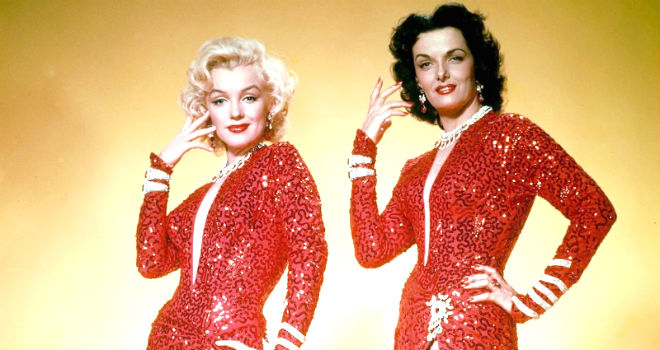 17. "
17. "
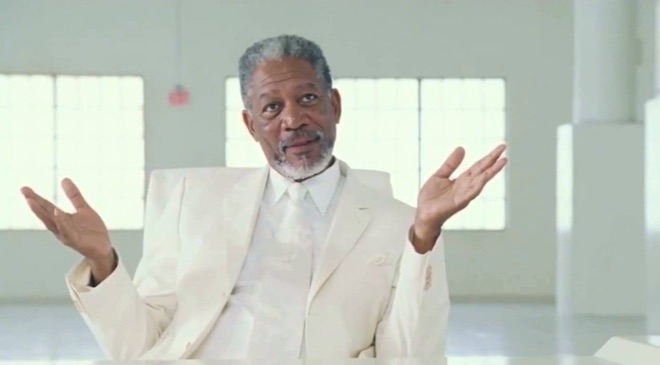


 If there's anything more beloved than
If there's anything more beloved than  [Source:
[Source: 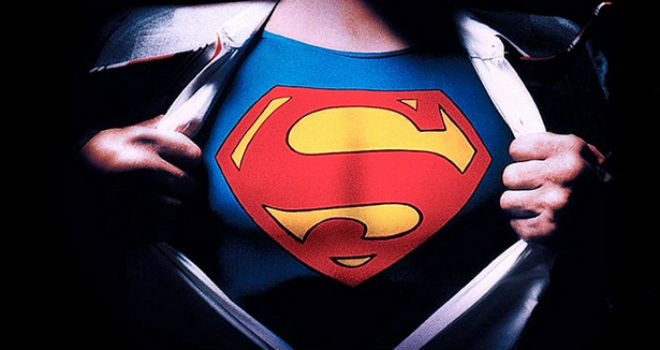 Did you know that June 12 every year is Superman Day? We're not sure how this particular day came to be dedicated to the Man of Steel, especially since he seems omnipresent in our lives every day. A pop cultural mainstay since 1938, the Krypton-born hero never seems far away, especially in the movies.
Did you know that June 12 every year is Superman Day? We're not sure how this particular day came to be dedicated to the Man of Steel, especially since he seems omnipresent in our lives every day. A pop cultural mainstay since 1938, the Krypton-born hero never seems far away, especially in the movies.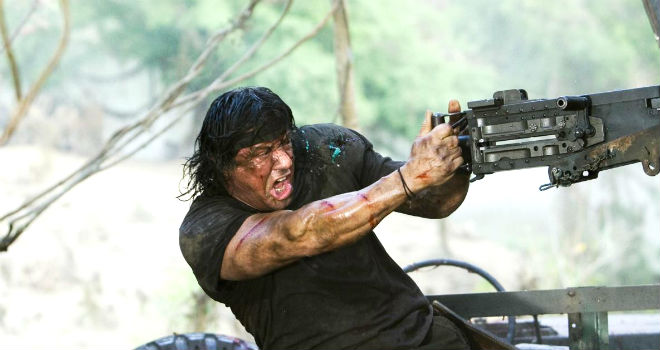 "Yo, Lois!" After the success of "Rocky," it's no wonder that "Superman: The Movie" producers Alexander and Ilya Salkind considered Stallone to play the Last Son of Krypton. Reportedly, he was deemed too ethnic for the part, though other sources have said that Marlon Brando (who was cast earlier as Superman's father, Jor-El) refused to work with him.
"Yo, Lois!" After the success of "Rocky," it's no wonder that "Superman: The Movie" producers Alexander and Ilya Salkind considered Stallone to play the Last Son of Krypton. Reportedly, he was deemed too ethnic for the part, though other sources have said that Marlon Brando (who was cast earlier as Superman's father, Jor-El) refused to work with him.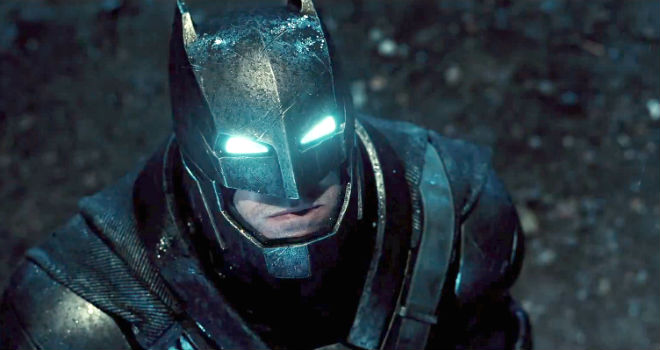 The future Batman was once Supes. When producer Jon Peters hired Kevin Smith to rewrite the script for proposed 1990s reboot "Superman Lives," the writer-director and comics fan envisioned his "Chasing Amy" star in the lead role. But when Tim Burton was hired to direct, he had Smith's script rewritten and tossed out his casting ideas.
The future Batman was once Supes. When producer Jon Peters hired Kevin Smith to rewrite the script for proposed 1990s reboot "Superman Lives," the writer-director and comics fan envisioned his "Chasing Amy" star in the lead role. But when Tim Burton was hired to direct, he had Smith's script rewritten and tossed out his casting ideas.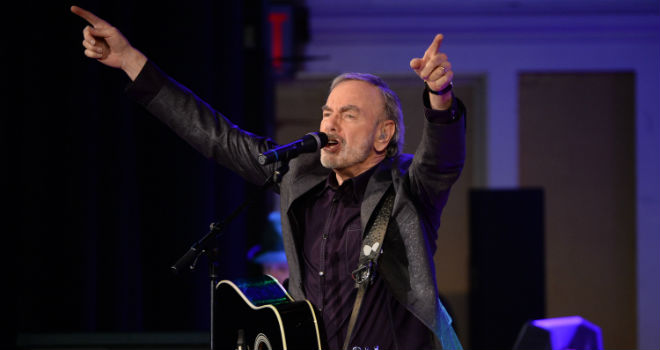 Yes, the rumble-voiced crooner was on the short list of performers that the Salkinds considered for Supes, even though he had no acting experience. Diamond reportedly turned down the role when he realized he could make more money if he spent 1977 touring. His "Superman" screen test is lost to history, though it may have sounded like
Yes, the rumble-voiced crooner was on the short list of performers that the Salkinds considered for Supes, even though he had no acting experience. Diamond reportedly turned down the role when he realized he could make more money if he spent 1977 touring. His "Superman" screen test is lost to history, though it may have sounded like 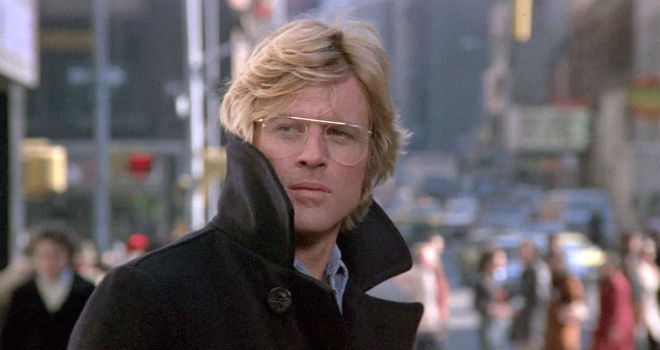 Redford had been playing men of action for a decade (in such movies as "Butch Cassidy and the Sundance Kid" and "
Redford had been playing men of action for a decade (in such movies as "Butch Cassidy and the Sundance Kid" and "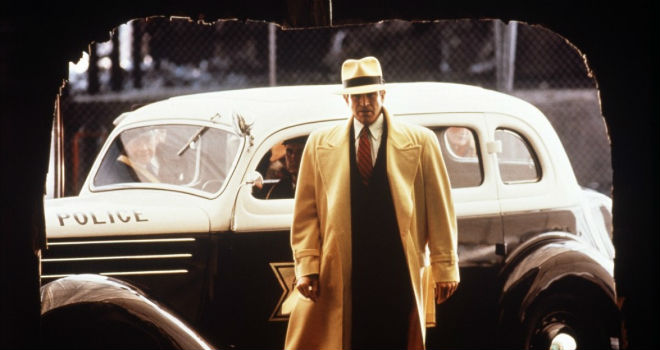 Asked by the Salkinds to consider playing Superman, "Shampoo" star Beatty got as far as taking the suit home for the weekend. He brought it back on Monday, saying he felt he looked ridiculous, and declined the part.
Asked by the Salkinds to consider playing Superman, "Shampoo" star Beatty got as far as taking the suit home for the weekend. He brought it back on Monday, saying he felt he looked ridiculous, and declined the part.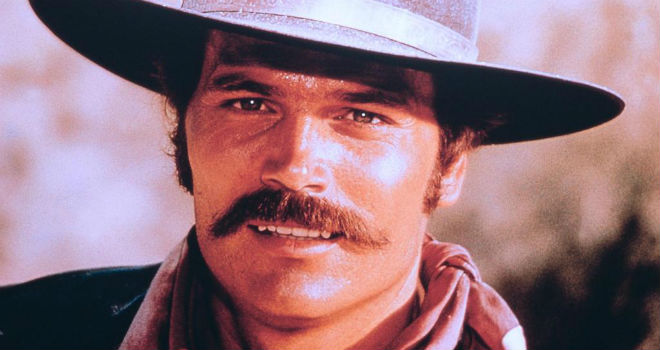 The Salkinds actually offered John Wayne's son the role of Superman, but he turned it down to look after his father, then newly diagnosed with stomach cancer. The younger Wayne did go on to star in action films "Sinbad and the Eye of the Tiger" and "The People That Time Forgot."
The Salkinds actually offered John Wayne's son the role of Superman, but he turned it down to look after his father, then newly diagnosed with stomach cancer. The younger Wayne did go on to star in action films "Sinbad and the Eye of the Tiger" and "The People That Time Forgot."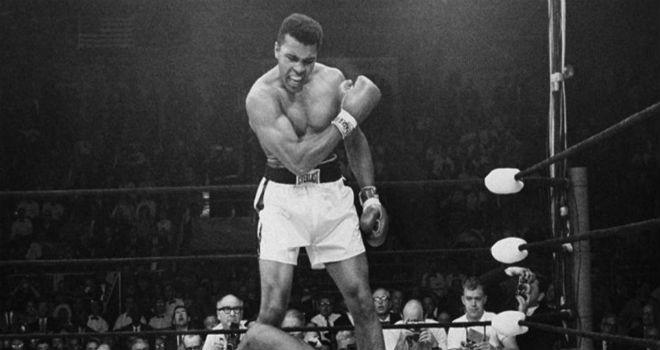 The boxing champ had no acting experience, but his charisma, physique, fighting skills, and worldwide fan base helped put him on the short list for Warners' first Superman movie. Producer Alexander Salkind was almost ready to cast Ali until Salkind's son, Ilya, pointed out that Ali was black. Ali did manage to appear in the 1978 comic book, "Superman vs. Muhammad Ali." And yes, The Greatest does knock out the Man of Steel.
The boxing champ had no acting experience, but his charisma, physique, fighting skills, and worldwide fan base helped put him on the short list for Warners' first Superman movie. Producer Alexander Salkind was almost ready to cast Ali until Salkind's son, Ilya, pointed out that Ali was black. Ali did manage to appear in the 1978 comic book, "Superman vs. Muhammad Ali." And yes, The Greatest does knock out the Man of Steel.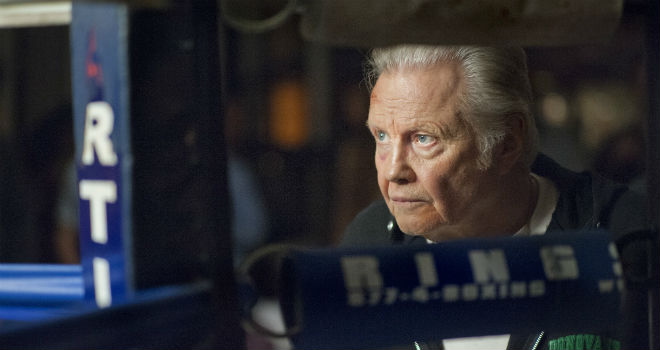 The "
The "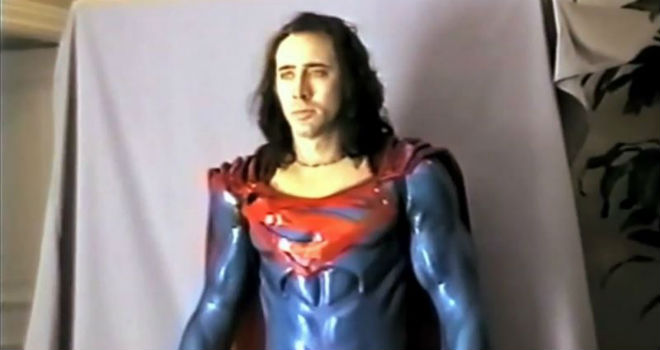 Cage is such a Superfan, he named his son Kal-El. In Tim Burton's aborted "Superman Lives," Cage would have played a revisionist version of the character; he was even fitted for a black-and-silver version of the Superman costume (that lit up!) and cashed a check for $20 million before Warner Bros. scrapped the project.
Cage is such a Superfan, he named his son Kal-El. In Tim Burton's aborted "Superman Lives," Cage would have played a revisionist version of the character; he was even fitted for a black-and-silver version of the Superman costume (that lit up!) and cashed a check for $20 million before Warner Bros. scrapped the project.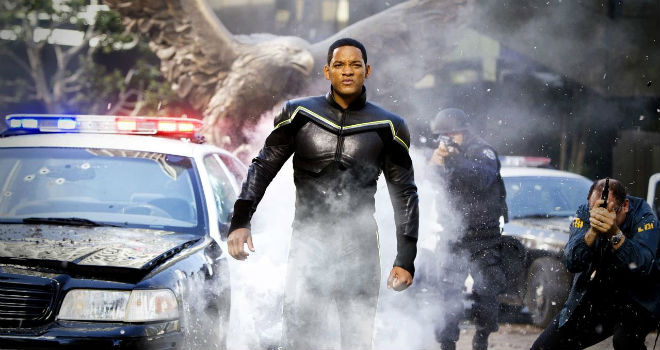 After Nicolas Cage and Tim Burton dropped out of "Superman Lives," producer Jon Peters tried to resurrect the project with a newly-revised script and offered the role to his "Wild Wild West" star, Smith. Mindful of the backlash he'd received for playing a character who was white on TV, Smith demurred. Years later, Smith recalled: "There is no way I'm playing Superman!' Because I had already done Jim West, and you can't be messing up white people's heroes in Hollywood!" He ended up playing an original screen superhero instead in "Hancock."
After Nicolas Cage and Tim Burton dropped out of "Superman Lives," producer Jon Peters tried to resurrect the project with a newly-revised script and offered the role to his "Wild Wild West" star, Smith. Mindful of the backlash he'd received for playing a character who was white on TV, Smith demurred. Years later, Smith recalled: "There is no way I'm playing Superman!' Because I had already done Jim West, and you can't be messing up white people's heroes in Hollywood!" He ended up playing an original screen superhero instead in "Hancock."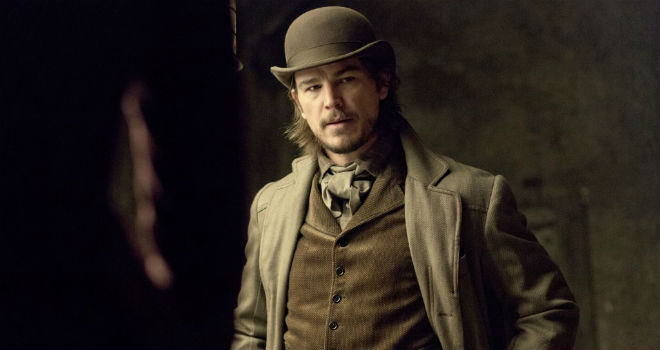 Up for the role in two separate films -- Wolfgang Petersen's aborted "Batman vs. Superman" and the "Flyby" project written by
Up for the role in two separate films -- Wolfgang Petersen's aborted "Batman vs. Superman" and the "Flyby" project written by 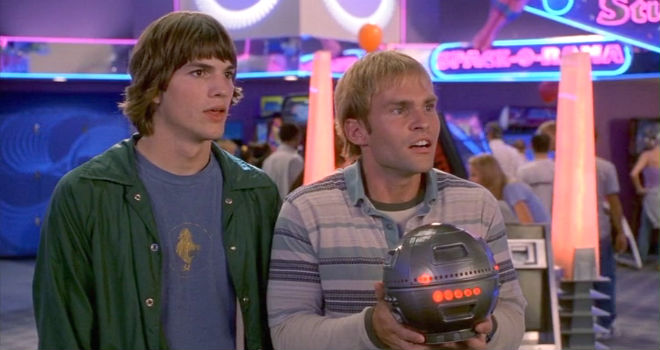 Before he tried to cast Josh Hartnett, Brett Ratner screen-tested the "
Before he tried to cast Josh Hartnett, Brett Ratner screen-tested the "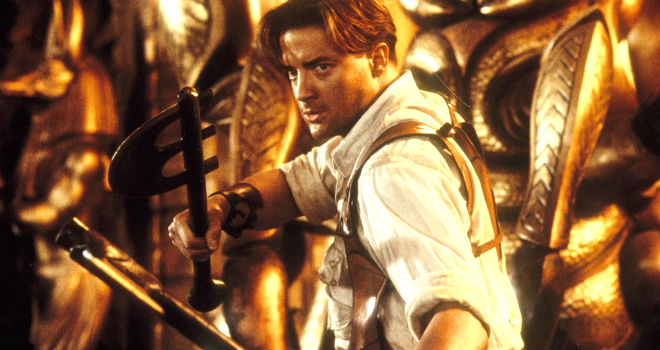 "
"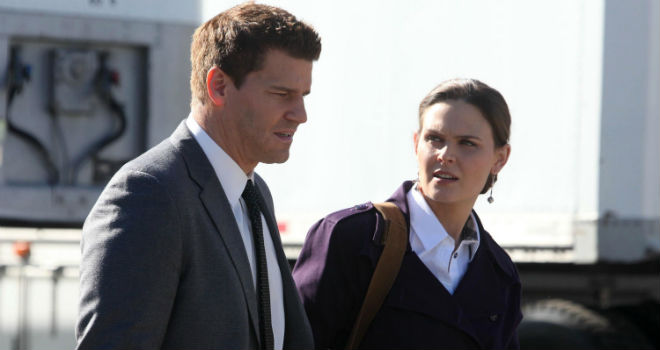 The "
The "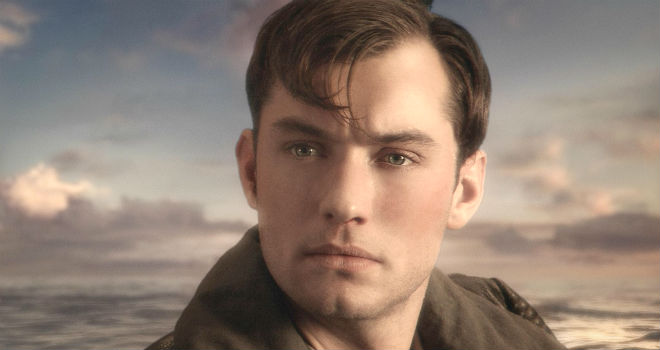 The English heartthrob was one of the actors Brett Ratner approached to star in "Superman: Flyby." He was also in talks to star in Wolfgang Petersen's "Batman vs. Superman," playing Clark Kent to Colin Farrell's Bruce Wayne. But Law demanded script approval over sequels, Petersen left to direct "Troy," and the project fell apart.
The English heartthrob was one of the actors Brett Ratner approached to star in "Superman: Flyby." He was also in talks to star in Wolfgang Petersen's "Batman vs. Superman," playing Clark Kent to Colin Farrell's Bruce Wayne. But Law demanded script approval over sequels, Petersen left to direct "Troy," and the project fell apart.
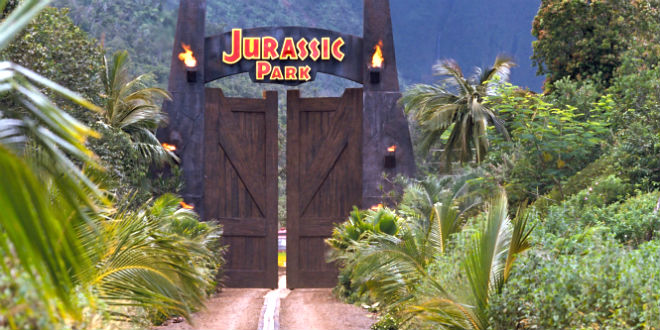
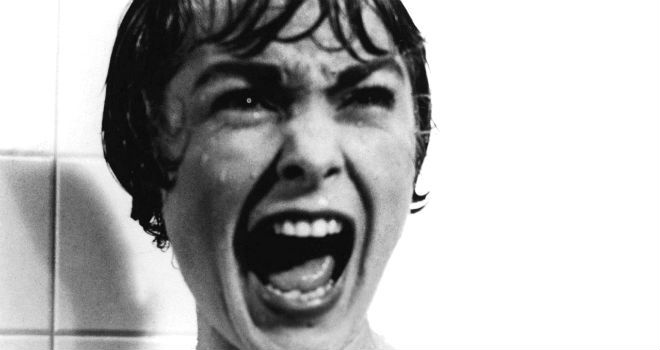 Besides making people forever afraid of motel-room showers,
Besides making people forever afraid of motel-room showers, 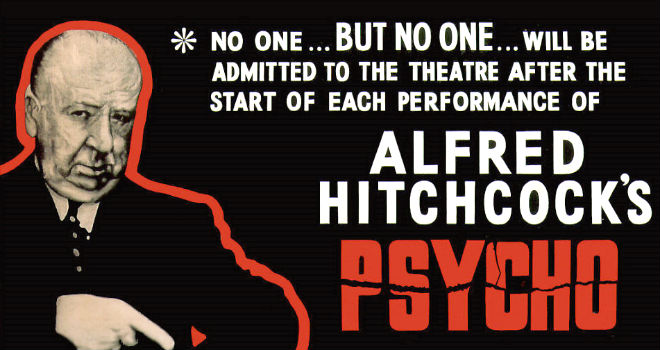 1. The film is based on Robert Bloch's novel, which was inspired by Ed Gein, the 1950s Wisconsin serial killer whose case would also inspire such movie murderers as Leatherface (in "The Texas Chainsaw Massacre" franchise) and Buffalo Bill (in "The Silence of the Lambs"). Bloch lived just 40 miles from where Gein's murders took place.
1. The film is based on Robert Bloch's novel, which was inspired by Ed Gein, the 1950s Wisconsin serial killer whose case would also inspire such movie murderers as Leatherface (in "The Texas Chainsaw Massacre" franchise) and Buffalo Bill (in "The Silence of the Lambs"). Bloch lived just 40 miles from where Gein's murders took place. 7. He also claimed that, for the role of the mother, he considered casting a theatrical grande dame, someone like Helen Hayes or Judith Anderson (who had played the unforgettably creepy Mrs. Danvers in Hitchcock's "Rebecca.") Norma Varden, the old woman whom Robert Walker nearly chokes to death in Hitchcock's "Strangers on a Train," read the reports and lobbied the director for the role of Mrs. Bates.
7. He also claimed that, for the role of the mother, he considered casting a theatrical grande dame, someone like Helen Hayes or Judith Anderson (who had played the unforgettably creepy Mrs. Danvers in Hitchcock's "Rebecca.") Norma Varden, the old woman whom Robert Walker nearly chokes to death in Hitchcock's "Strangers on a Train," read the reports and lobbied the director for the role of Mrs. Bates.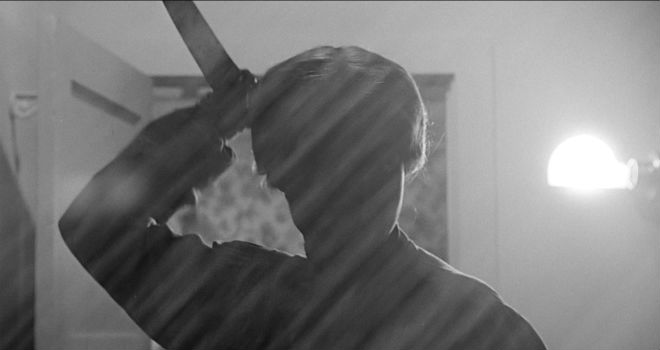 12. The shower murder is one of the most studied montages of film editing ever made. It contains at least 70 edits in just 45 seconds.
12. The shower murder is one of the most studied montages of film editing ever made. It contains at least 70 edits in just 45 seconds.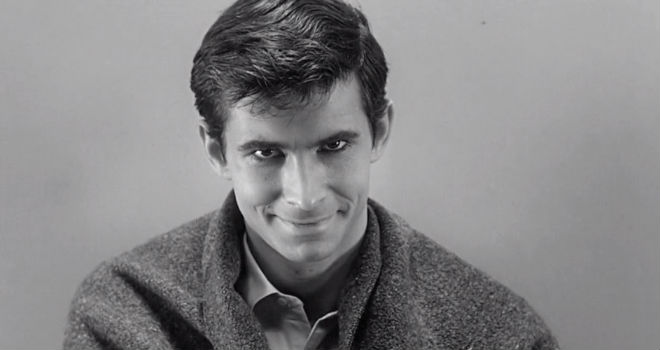 18. The voice of "Mother" was provided by three different performers, including one man: Paul Jasmin, a character actor and friend of
18. The voice of "Mother" was provided by three different performers, including one man: Paul Jasmin, a character actor and friend of 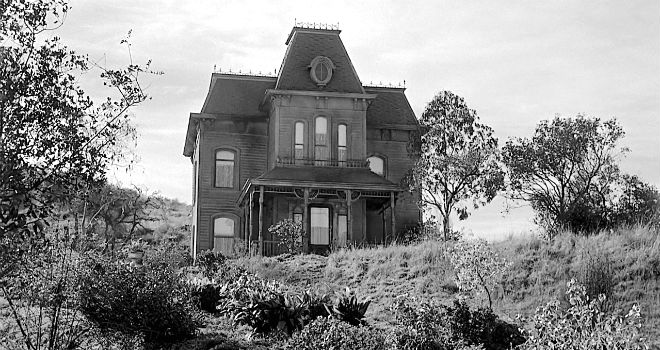 25. "Psycho" was nominated for four Academy Awards: Best Director, Best Supporting Actress (Leigh), Best Black-and-White Cinematography, and Best Black-and-White Production Design. For all its technical and narrative innovations, "Psycho" didn't win a single Oscar.
25. "Psycho" was nominated for four Academy Awards: Best Director, Best Supporting Actress (Leigh), Best Black-and-White Cinematography, and Best Black-and-White Production Design. For all its technical and narrative innovations, "Psycho" didn't win a single Oscar.
 [Sources:
[Sources: 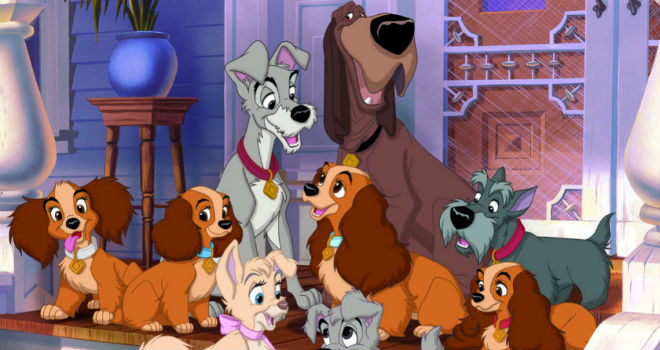 1. It took nearly 20 years to get the film made. The main character originated in sketches made by Disney animator Joe Grant in 1937, based on his own spaniel, whose name was Lady. Grant envisioned a short cartoon about a dog who's puzzled by the arrival of his masters' newborn baby.
1. It took nearly 20 years to get the film made. The main character originated in sketches made by Disney animator Joe Grant in 1937, based on his own spaniel, whose name was Lady. Grant envisioned a short cartoon about a dog who's puzzled by the arrival of his masters' newborn baby.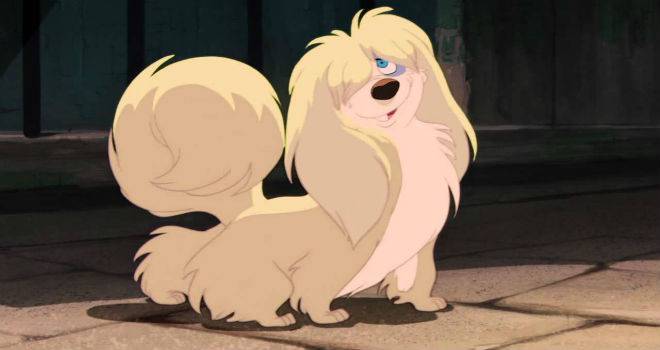 6. Peggy Lee was perhaps the first major star to sign on as a voice actor in a Disney cartoon. The torch singer voiced the roles of Darling, pound hound Peg, and cats Si and Am. She also co-wrote all the songs (with Sonny Burke) and sang four of them ("What Is a Baby," "La La Lu," "The Siamese Cat Song," and "He's a Tramp").
6. Peggy Lee was perhaps the first major star to sign on as a voice actor in a Disney cartoon. The torch singer voiced the roles of Darling, pound hound Peg, and cats Si and Am. She also co-wrote all the songs (with Sonny Burke) and sang four of them ("What Is a Baby," "La La Lu," "The Siamese Cat Song," and "He's a Tramp").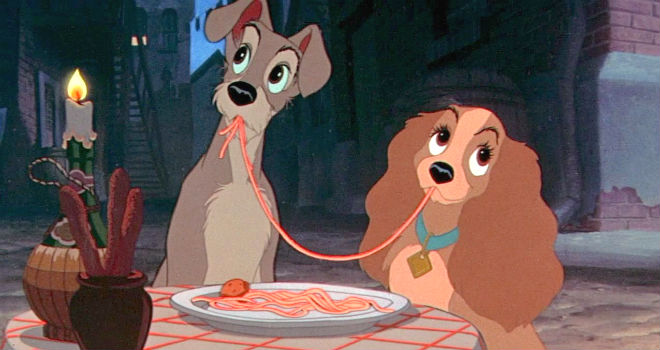 12. The iconic spaghetti scene almost didn't happen. Walt nixed the idea, assuming that the spectacle of two animals scarfing down pasta in tomato sauce would be messy and awkward. But animator Frank Thomas worked up a rough version of the scene that changed Disney's mind.
12. The iconic spaghetti scene almost didn't happen. Walt nixed the idea, assuming that the spectacle of two animals scarfing down pasta in tomato sauce would be messy and awkward. But animator Frank Thomas worked up a rough version of the scene that changed Disney's mind. 16. The CinemaScope process meant that the film was essentially made twice: Once in the standard, nearly square aspect ratio, and once in widescreen, after Walt decided to try the new format that was expected to lure people away from those new square boxes in their living rooms. But Walt learned that many theaters were still not equipped to project CinemaScope movies, so he released both versions.
16. The CinemaScope process meant that the film was essentially made twice: Once in the standard, nearly square aspect ratio, and once in widescreen, after Walt decided to try the new format that was expected to lure people away from those new square boxes in their living rooms. But Walt learned that many theaters were still not equipped to project CinemaScope movies, so he released both versions.
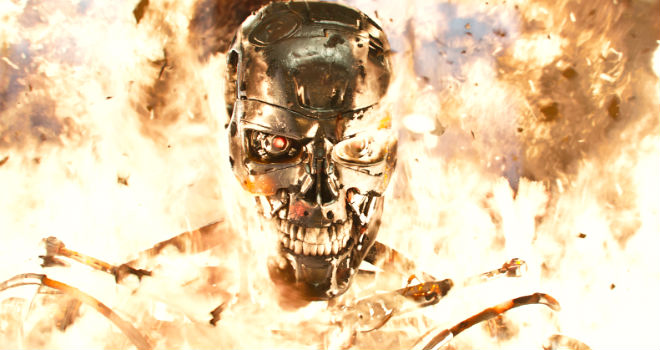 (SPOILER WARNING: Turn back now if you don't want to know anything about the plot of Arnold's new "Terminator" movie. I mean, more than what the trailers have already spoiled.)
(SPOILER WARNING: Turn back now if you don't want to know anything about the plot of Arnold's new "Terminator" movie. I mean, more than what the trailers have already spoiled.) After "Batman Begins," the word "reboot" became the hottest phrase in Hollywood. And "Terminator: Genisys" is the latest product of that craze.
After "Batman Begins," the word "reboot" became the hottest phrase in Hollywood. And "Terminator: Genisys" is the latest product of that craze.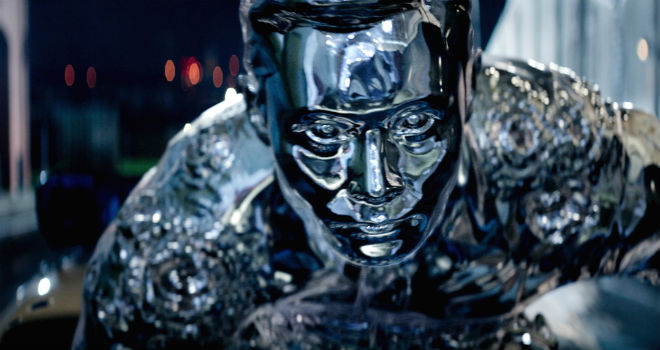 Significant chunks of the film's first act are comprised of recreated scenes and sequences from the first film, with iconic elements from the second film also added in. It's basically a 2015 remix of key moments from the 1984 film; in fact, the film largely plays out like a very expensive "mad lib" to all things "T1" and "Terminator 2: Judgment Day."
Significant chunks of the film's first act are comprised of recreated scenes and sequences from the first film, with iconic elements from the second film also added in. It's basically a 2015 remix of key moments from the 1984 film; in fact, the film largely plays out like a very expensive "mad lib" to all things "T1" and "Terminator 2: Judgment Day."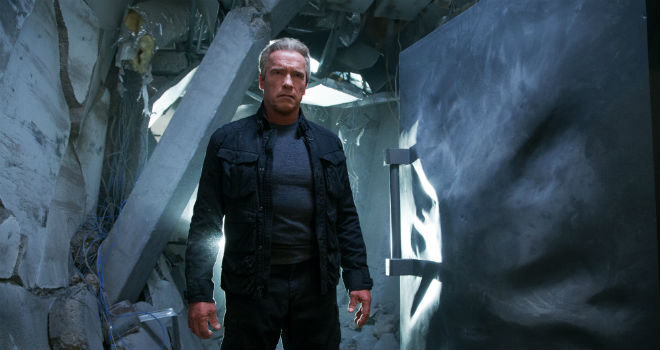
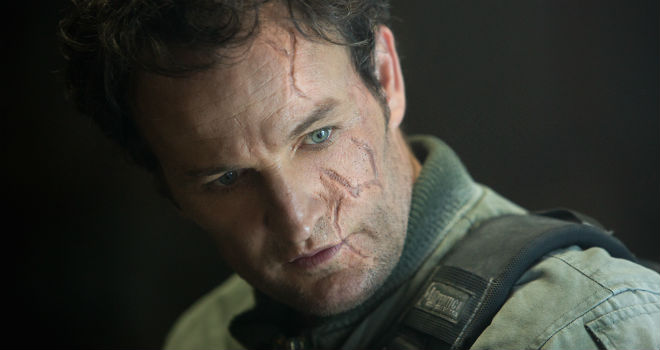
 "Genisys" pulls a Marvel by adding a mid-credits tag that briefly sets up a potential sequel, just as the film's climatic scenes pave the way for a future where, for the first time in over three decades, Sarah Connor is free to choose her own fate.
"Genisys" pulls a Marvel by adding a mid-credits tag that briefly sets up a potential sequel, just as the film's climatic scenes pave the way for a future where, for the first time in over three decades, Sarah Connor is free to choose her own fate.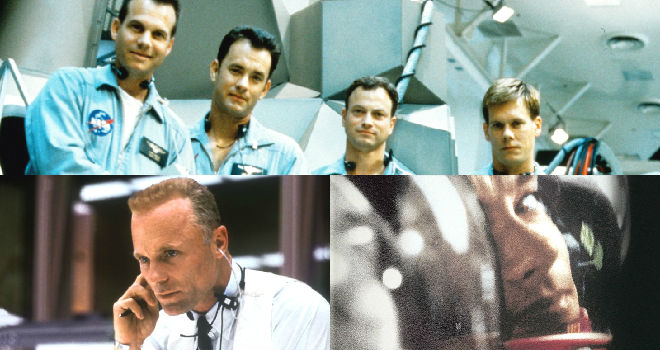 Not all Hollywood blockbusters are about rampaging dinosaurs, time-traveling cyborgs or spandex-clad heroes.
Not all Hollywood blockbusters are about rampaging dinosaurs, time-traveling cyborgs or spandex-clad heroes.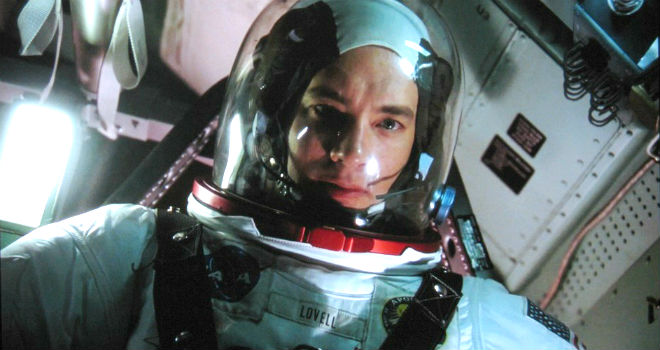 6. "Apollo 13" reunited "Forrest Gump" co-stars Tom Hanks and Gary Sinise. Weirdly enough, one scene between Hanks' Gump and Sinise's Lieutenant Dan involved the latter promising that he would become an astronaut if Gump became a shrimp boat captain. Sarcastic or not, at least he made good on his promise.
6. "Apollo 13" reunited "Forrest Gump" co-stars Tom Hanks and Gary Sinise. Weirdly enough, one scene between Hanks' Gump and Sinise's Lieutenant Dan involved the latter promising that he would become an astronaut if Gump became a shrimp boat captain. Sarcastic or not, at least he made good on his promise.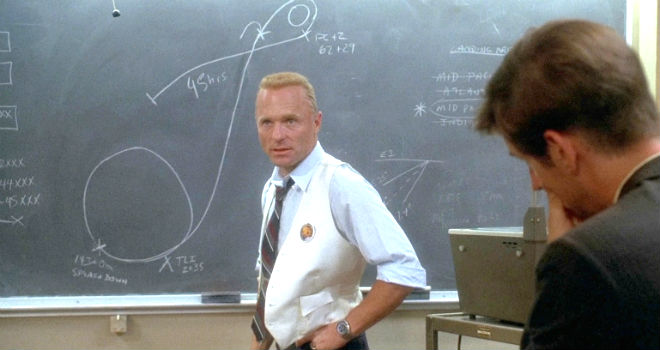 11. This film was one of two times Ed Harris played a character tasked with guiding astronauts back to Earth after a mechanical disaster. He provided the voice of Houston Mission Control in "Gravity."
11. This film was one of two times Ed Harris played a character tasked with guiding astronauts back to Earth after a mechanical disaster. He provided the voice of Houston Mission Control in "Gravity."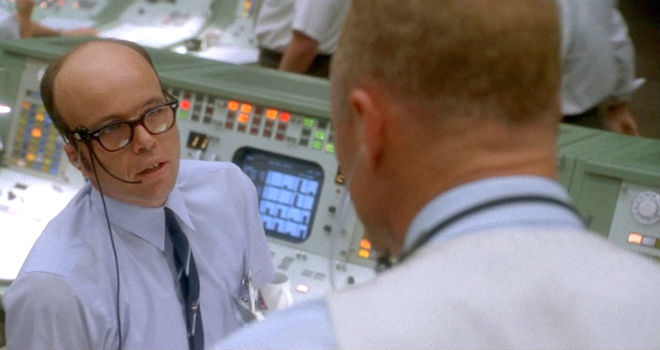 15. Ron Howard's brother, Clint (pictured above), played a significant role in the film as flight controller Seymour Liebergot.
15. Ron Howard's brother, Clint (pictured above), played a significant role in the film as flight controller Seymour Liebergot.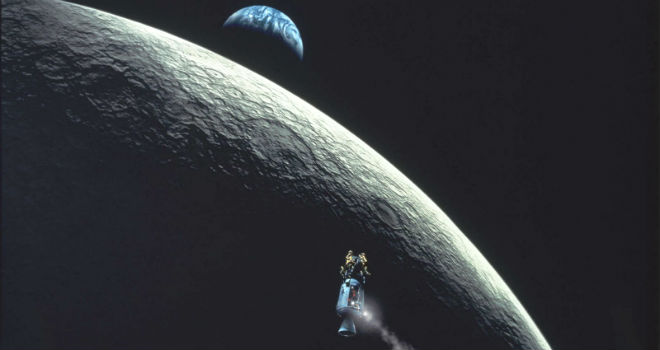 20. While the line "Failure is not an option" was spoken by Ed Harris in the film, it was never actually spoken by anyone during the Apollo 13 mission.
20. While the line "Failure is not an option" was spoken by Ed Harris in the film, it was never actually spoken by anyone during the Apollo 13 mission.
 Think you're a
Think you're a  Looks like we picked the wrong week to quit celebrating milestones.
Looks like we picked the wrong week to quit celebrating milestones.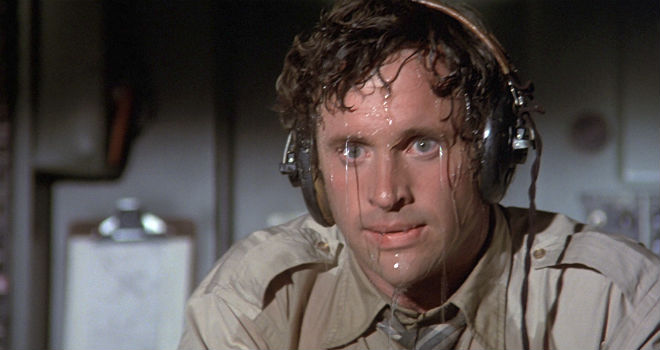 5. To play the hero, Ted Striker, Paramount wanted ZAZ to cast a conventional comic lead, like Chevy Chase or Bill Murray. But the filmmakers wanted someone who could work on their deadpan comic wavelength. Among those who auditioned for the role were Bruce Jenner and a then-unknown comic named David Letterman. (Yep, that happened.)
5. To play the hero, Ted Striker, Paramount wanted ZAZ to cast a conventional comic lead, like Chevy Chase or Bill Murray. But the filmmakers wanted someone who could work on their deadpan comic wavelength. Among those who auditioned for the role were Bruce Jenner and a then-unknown comic named David Letterman. (Yep, that happened.) 10. Lloyd Bridges, who played air traffic controller McCroskey, had starred on TV in the drama "San Francisco International Airport." ZAZ had sought "Airport" franchise mainstay George Kennedy for the role, but he and Universal felt that appearing in the spoof would damage the franchise.
10. Lloyd Bridges, who played air traffic controller McCroskey, had starred on TV in the drama "San Francisco International Airport." ZAZ had sought "Airport" franchise mainstay George Kennedy for the role, but he and Universal felt that appearing in the spoof would damage the franchise. 13. Leslie Nielsen, who had played the doomed ship captain in "The Poseidon Adventure," rounded out the cast as Dr. Rumack. Of course, "Airplane!" launched a second career for him as a deadpan comic leading man in movies from the "Naked Gun" movies to the "Scary Movie" horror spoofs.
13. Leslie Nielsen, who had played the doomed ship captain in "The Poseidon Adventure," rounded out the cast as Dr. Rumack. Of course, "Airplane!" launched a second career for him as a deadpan comic leading man in movies from the "Naked Gun" movies to the "Scary Movie" horror spoofs. Since its release 30 years ago this week (on July 3, 1985),
Since its release 30 years ago this week (on July 3, 1985), 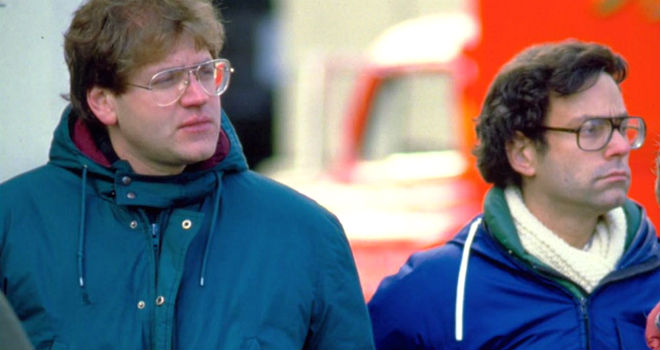 1. Director
1. Director  6. Bullying villain Biff Tannen (Thomas F. Wilson, pictured) was named for Ned Tanen, a studio executive Zemeckis and Gale had clashed with during the making of "Used Cars."
6. Bullying villain Biff Tannen (Thomas F. Wilson, pictured) was named for Ned Tanen, a studio executive Zemeckis and Gale had clashed with during the making of "Used Cars."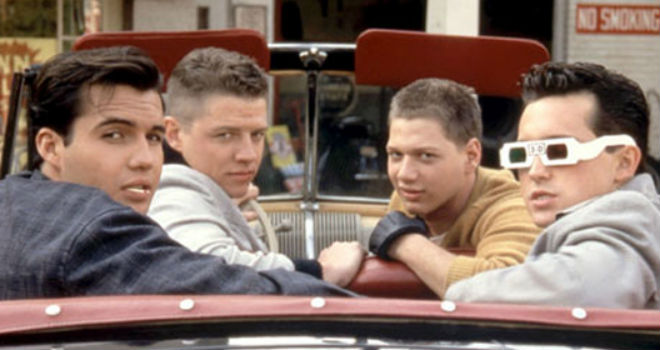 12. Yes, that's
12. Yes, that's 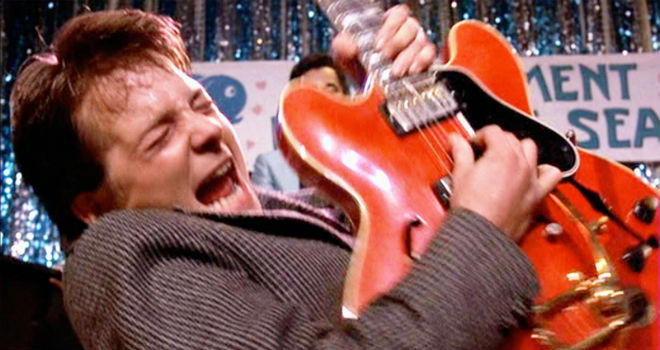 18. For Marty's all-important rock 'n' roll performance at the school dance, Fox learned to mimic the guitar moves with his hands, but his showboating solo was dubbed by guitarist Tim May. His vocals were dubbed by singer Mark Campbell of Jack Mack and the Heart Attack.
18. For Marty's all-important rock 'n' roll performance at the school dance, Fox learned to mimic the guitar moves with his hands, but his showboating solo was dubbed by guitarist Tim May. His vocals were dubbed by singer Mark Campbell of Jack Mack and the Heart Attack. 23. The film was No. 1 on the box office charts for 11 of 12 weeks throughout the summer of 1985. (It was knocked out of the top spot once, by "National Lampoon's European Vacation," but then it returned.)
23. The film was No. 1 on the box office charts for 11 of 12 weeks throughout the summer of 1985. (It was knocked out of the top spot once, by "National Lampoon's European Vacation," but then it returned.)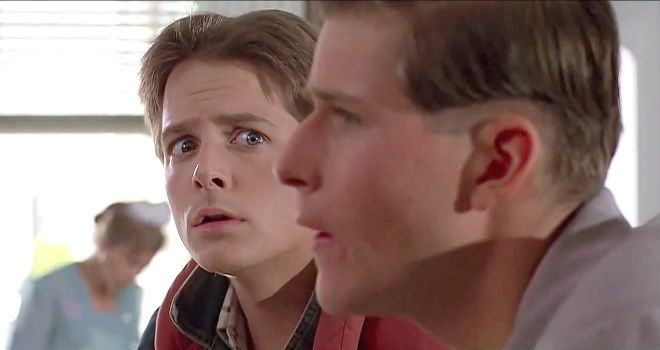 27. Crispin Glover also didn't appear in the sequels because of a salary dispute. Glover claims he was being given less than half of what the other principals were being offered. He also has said he believes his notoriously demented guest appearance on "Late Night with David Letterman" scared the filmmakers away. Nonetheless, he eventually reconciled with Zemeckis and played Grendel in the director's motion-capture epic, "Beowulf."
27. Crispin Glover also didn't appear in the sequels because of a salary dispute. Glover claims he was being given less than half of what the other principals were being offered. He also has said he believes his notoriously demented guest appearance on "Late Night with David Letterman" scared the filmmakers away. Nonetheless, he eventually reconciled with Zemeckis and played Grendel in the director's motion-capture epic, "Beowulf."